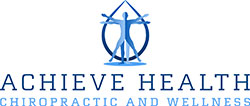Chiropractic Treatment For Headaches
One third of Americans suffer from tension headaches. These headaches can be felt on both sides of the head as a dull, steady pain that often becomes intense at the end of the day. Unfortunately, traditional medicine has little to offer chronic headache sufferers. Pain medicine and muscle relaxants will ease the pain. Stress reduction, relaxation and exercise can improve wellness and perhaps prevent the occurrence of the headache.
For half a century, the American Medical Association waged war against chiropractic, an intervention that relies on spinal adjustments to treat health problems. Chiropractors were regarded as the modern-day equivalent of snake-oil salesmen. Today, chiropractors are the third largest group of health care providers, after physicians and dentists, who treat patients directly. AMA policy now states that it is ethical for physicians not only to associate professionally with chiropractors but also to refer patients to them for diagnostic or therapeutic services.
In order to be called a Doctor of Chiropractic Medicine (DC), practitioners must graduate from one of the 16 chiropractic schools currently accredited by the Council on Chiropractic Education. compares basic science education between chiropractic and medical schools. Before chiropractors can practice, they must be licensed by their state. All states require them to pass the National Chiropractic Board examination. Chiropractic services are covered by most health insurance plans, including Medicare. However, conflict between the chiropractic and medical communities continues over such issues as limitations on insurance reimbursements for chiropractic services and allowing health care providers other than chiropractors to do spinal adjustments.
Prior to 1990, very little was known about chiropractic care in terms of use, costs, effectiveness, or quality—parameters used to evaluate mainstream medical practices. That changed when RAND researchers published a series of landmark studies that broke through this information barrier. The studies address a number of key questions:
| Comparison of Chiropractic and Medical School Curriculum | ||||
| Chiropractic Schools | Medical Schools | |||
| Characteristics | Average hours Characteristics (all U.S. schools) | Percentage of total contact hours | Average hours (all U.S. schools) | Percentage of total contact hours |
| Total Contact | 4,826 | 100 | 4,667 | 100 |
| Basic Sciences | 1,420 | 29 | 1,200 | 26 |
| Clerkship (clinical experience prior to graduation) | 1,405 | 29 | 3,467* | 74 |
| Clinical Sciences | 3,406 | 71 | 3,467* | 76 |
| Chiropractic Sciences | 1,975 | 41 | NA | NA |
| SOURCE: I. Coulter et al., 1998. *Combined in medical schools. | ||||
Who goes to chiropractors and why? Patients are primarily middle-aged, married people. Biggest complaint: low-back pain. These findings are further summarized in the box below. The 1991 RAND study was the first estimate of the use of chiropractic services in the United States. The 1998 study updated and expanded on it.
For both studies, the researchers examined patient records from randomly selected chiropractors in the United States and Canada.
| Snapshot of Chiropractic Patients and Care in the United States and Canada |
|
Chiropractic care is the most commonly used form of complementary and alternative medicine. This field encompasses health care approaches that are neither taught widely in medical schools nor generally available in U.S. hospitals.
There are so many benefits to Chiropractic Care:
• Herbal medicine • folk remedies
• Chiropractic • lifestyle diet
• Spiritual healing • energy healing
• Megavitamins • homeopathy
• Self-help group • hypnosis
• Imagery • biofeedback
• Commercial diet • acupuncture
Call you Minnesota Chiropractic Office today. They truly have healing hands.


